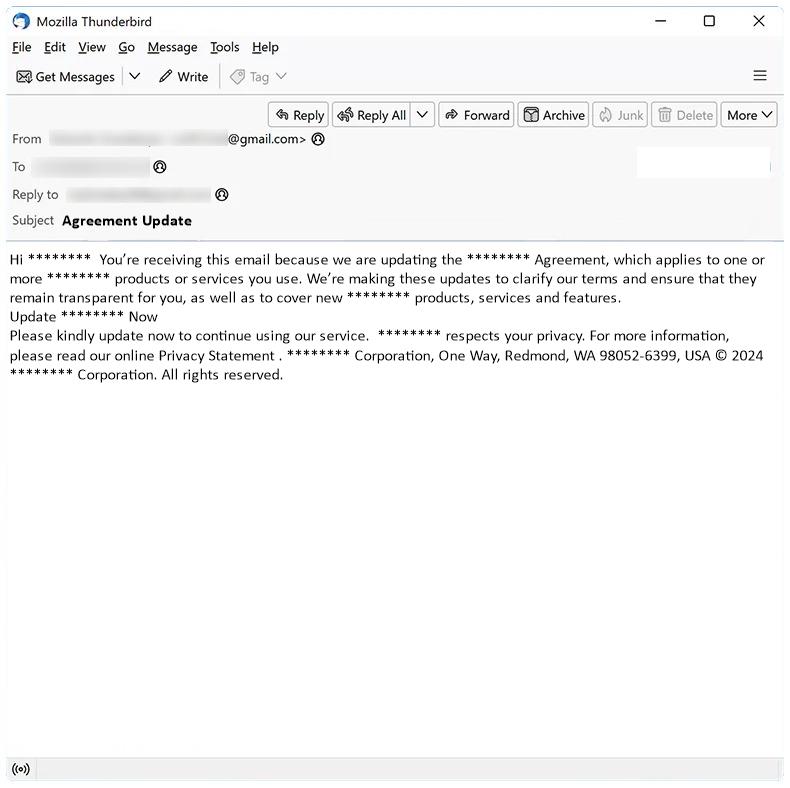Agreement Update email spam is a type of phishing scam in which cybercriminals send fraudulent emails claiming to be from a legitimate company or organization, such as a bank or online service provider. The emails typically inform the recipient that their account or agreement needs to be updated or verified, and provide a link or attachment for the recipient to click on in order to do so.
These spam campaigns can infect computers in a variety of ways, including:
1. Malware: Clicking on the link or downloading the attachment in the Agreement Update email can lead to the installation of malware on the victim’s computer. This malware can steal sensitive information, such as login credentials or financial data, and can also be used to carry out further cyberattacks.
2. Phishing: The fraudulent website or form that the victim is directed to may be designed to look like a legitimate login page or account verification form. If the victim enters their login credentials or other personal information, it will be stolen by the cybercriminals behind the scam.
3. Social engineering: Cybercriminals may use psychological manipulation tactics to trick victims into interacting with the Agreement Update email scam, such as creating a sense of urgency or fear in order to prompt the victim to click on the link or provide their information.
The risks of interacting with Agreement Update email scams include:
1. Identity theft: Victims may have their personal and financial information stolen, leading to identity theft and financial losses.
2. Data loss: Malware installed through the scam may lead to the loss of important data stored on the victim’s computer.
3. Compromised accounts: If victims provide their login credentials to the cybercriminals, their accounts may be taken over and used for further malicious activities.
To protect yourself from Agreement Update email spam and other phishing scams, it is important to be cautious when receiving unsolicited emails, especially those that ask for personal or sensitive information. Verify the legitimacy of the sender before interacting with any links or attachments in the email, and never provide personal information unless you are sure of the authenticity of the request.

